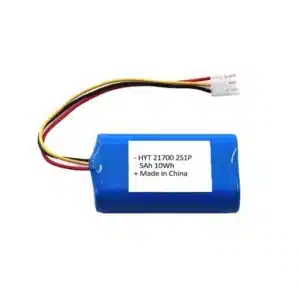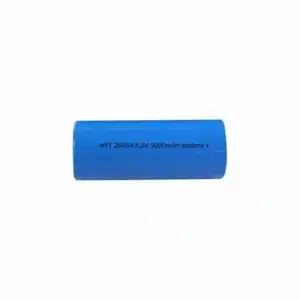Deep cycle marine battery
Deep cycle marine batteries are specifically designed to provide continuous power output, suitable for various onboard electronic devices and systems. These batteries differ from starter batteries, which are used to deliver high energy for a short period to start the engine. Deep cycle batteries can withstand multiple discharges and recharges, making them suitable for long-term use.
Lead-acid batteries are gradually being replaced by LiFePO4 batteries. The mainstream marine batteries come in 4 types: 12V, 24V, 36V, and 48V, with capacities ranging from 20Ah to 400Ah.
We are a professional lithium battery manufacturing factory with the capability to produce various marine batteries to meet your needs.
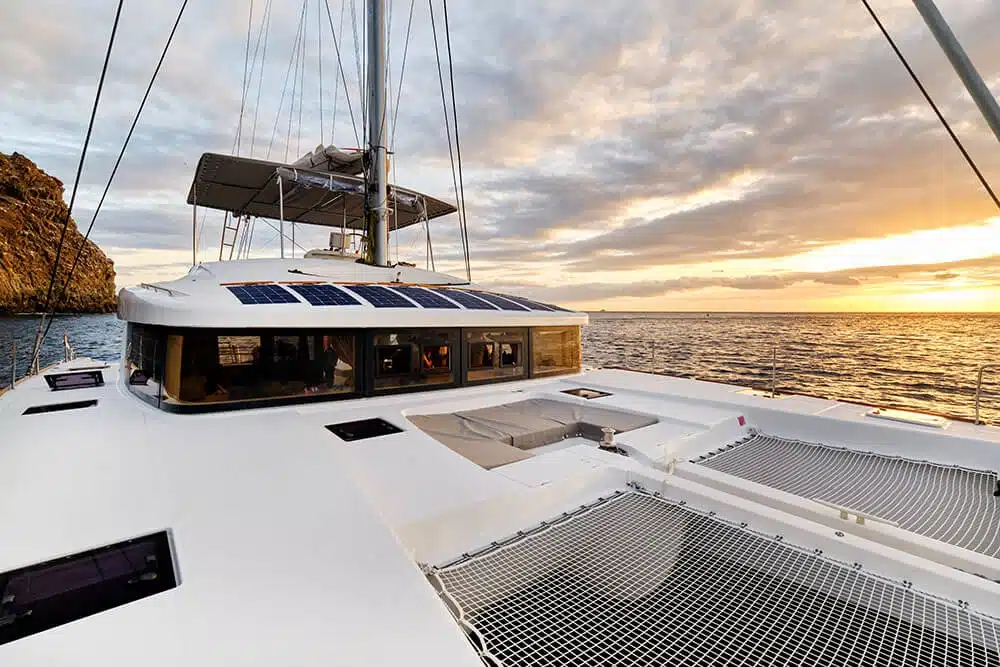
Durability
Ensures the reliability and safety of the battery when used on a boat, including waterproofing.
Deep Cycle Capability
Provides stable power output over a long period, supplying power to various onboard appliances.
Versatile Use
Can be used for starting the engine and providing long-term power supply.
Zero Maintenance Cost
LiFePO4 batteries require no maintenance, no need to add water.
marine deep cycle battery product
Based on the size of the customer’s marine battery compartment, power requirements, and current parameters, we recommend different LiFePO4 deep cycle batteries. All our batteries are from major domestic LiFePO4 brands, ensuring quality and reasonable prices.
Below are some of the 12V, 24V, 36V, and 48V marine batteries we produce. In addition to the models shown, as a Chinese marine battery manufacturer, we can produce whatever you need.
- Deep Cycle Marine Batteries
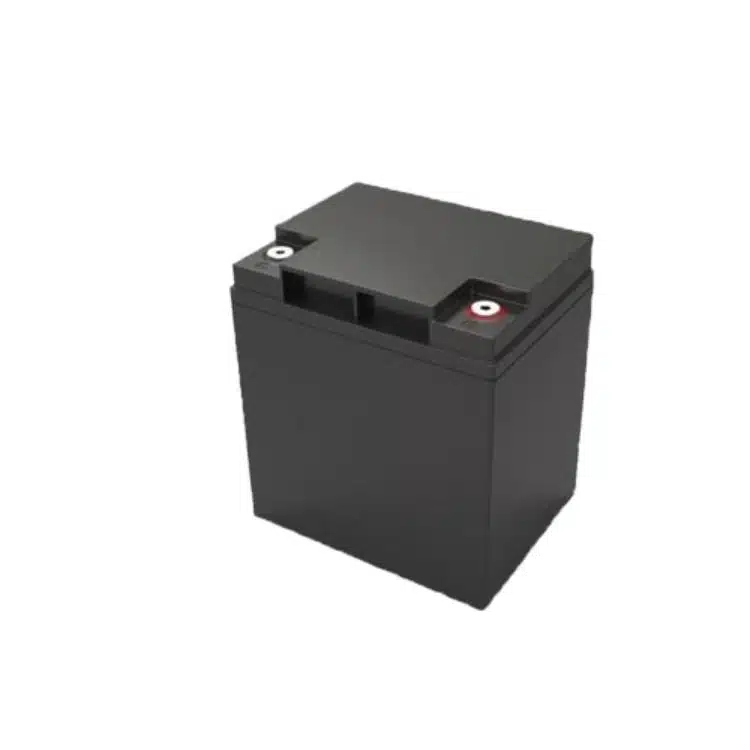
12.8V 30Ah LiFePo4 Battery
Nominal voltage: 12.8V
Nominal capacity: 30Ah
Rated energy: 384Wh
Recommend charge current: ≤15A
Peak discharge current: 60A
Internal resistance: ≤30mΩ
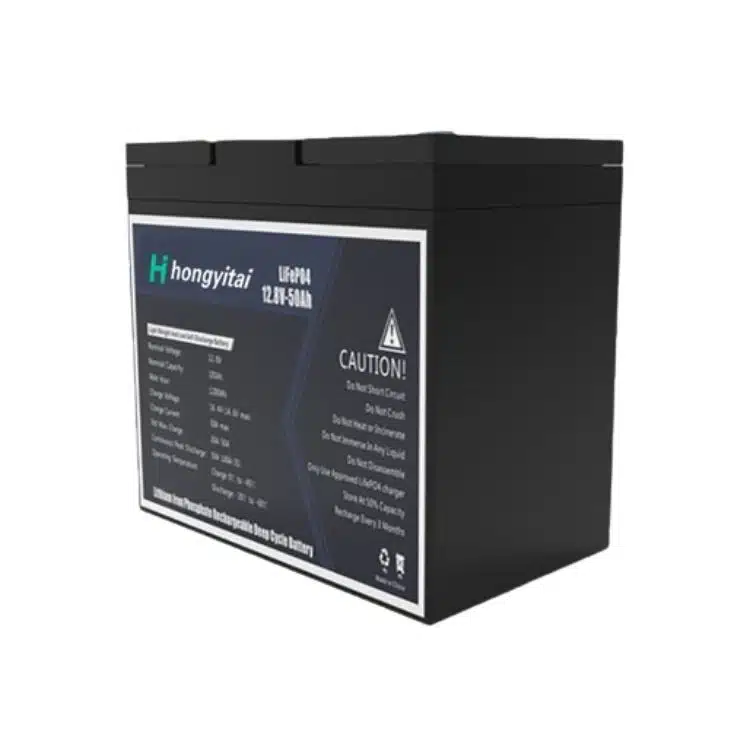
12.8V 50Ah LiFePo4 Battery
Nominal voltage: 12.8V
Nominal capacity: 50Ah
Rated energy: 640Wh
Recommend charge current: ≤25A
Max charge current: 100A
Internal resistance: ≤15mΩ
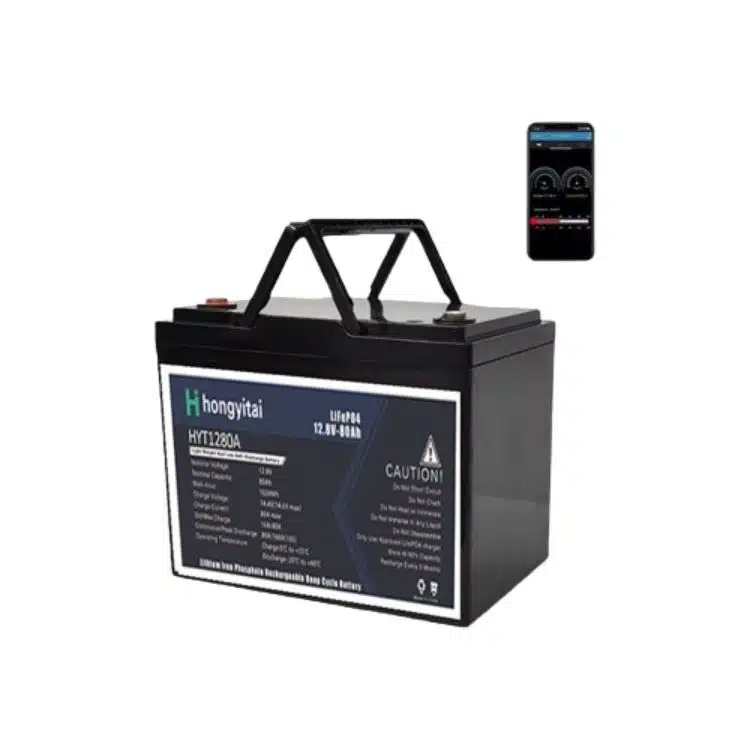
12.8V 80Ah LiFePo4 Battery
Nominal voltage: 12.8V
Nominal capacity: 80Ah
Rated energy: 1024Wh
Recommend charge current: ≤40A
Max charge current: 160A
Internal resistance: ≤12mΩ

12.8V 100Ah LiFePo4 Battery
Nominal voltage: 12.8V
Nominal capacity: 100Ah
Rated energy: 1280Wh
Recommend charge current: ≤50A
Max charge current: 200A
Internal resistance: ≤10mΩ
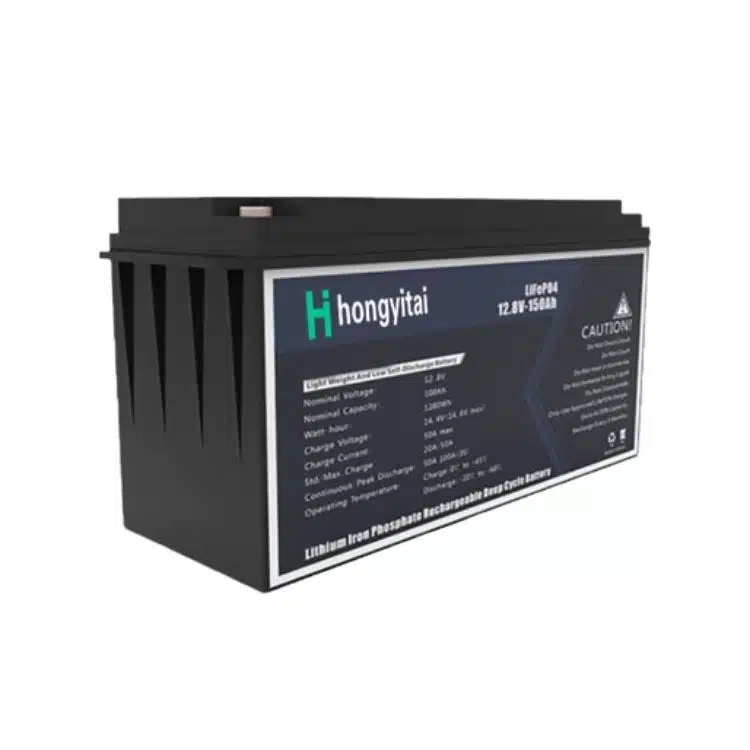
12.8V 150Ah LiFePo4 Battery
Nominal voltage: 12.8V
Nominal capacity: 150Ah
Rated energy: 1920Wh
Recommend charge current: ≤100A
Max charge current: 300A
Internal resistance: ≤10mΩ
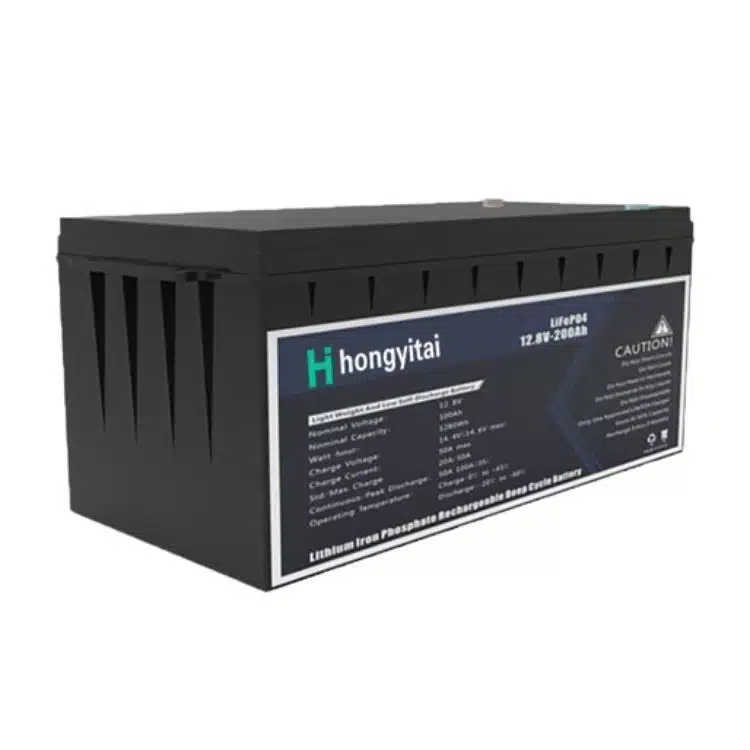
12.8V 200Ah LiFePo4 Battery
Nominal voltage: 12.8V
Nominal capacity: 200Ah
Rated energy: 2560Wh
Recommend charge current: ≤100A
Max charge current: 200A
Internal resistance: ≤10mΩ
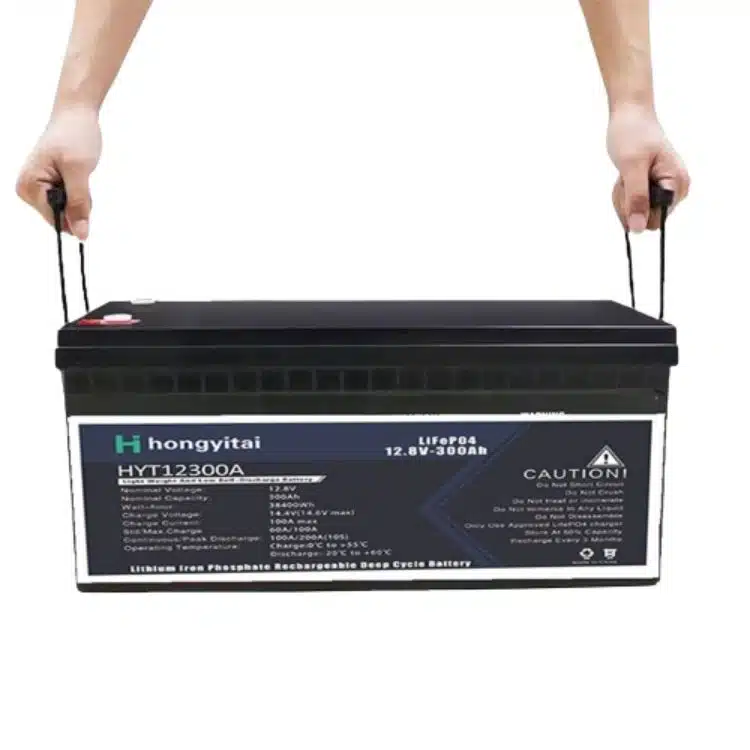
12.8V 300Ah LiFePo4 Battery
Nominal voltage: 12.8V
Nominal capacity: 300Ah
Rated energy: 3840Wh
Recommend charge current: ≤80A
Max charge current: 200A
Internal resistance: ≤10mΩ

12.8V 400Ah LiFePo4 Battery
Nominal voltage: 12.8V
Nominal capacity: 400Ah
Rated energy: 5120Wh
Recommend charge current: ≤50A
Max charge current: 100A
Internal resistance: ≤12mΩ
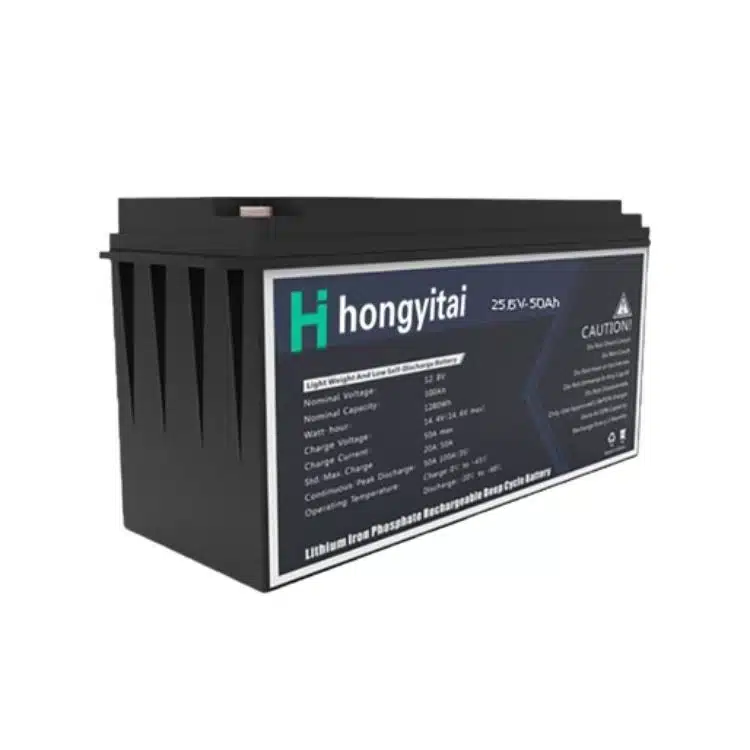
24V 50Ah LiFePo4 Battery
Nominal voltage: 25.6V
Nominal capacity: 50Ah
Rated energy: 1280Wh
Recommend charge current: ≤25A
Peak discharge current: 100A
Internal resistance: ≤20mΩ

24V 100Ah LiFePo4 Battery
Nominal voltage: 25.6V
Nominal capacity: 100Ah
Rated energy: 2560Wh
Recommend charge current: ≤50A
Peak discharge current: 200A
Internal resistance: ≤15mΩ
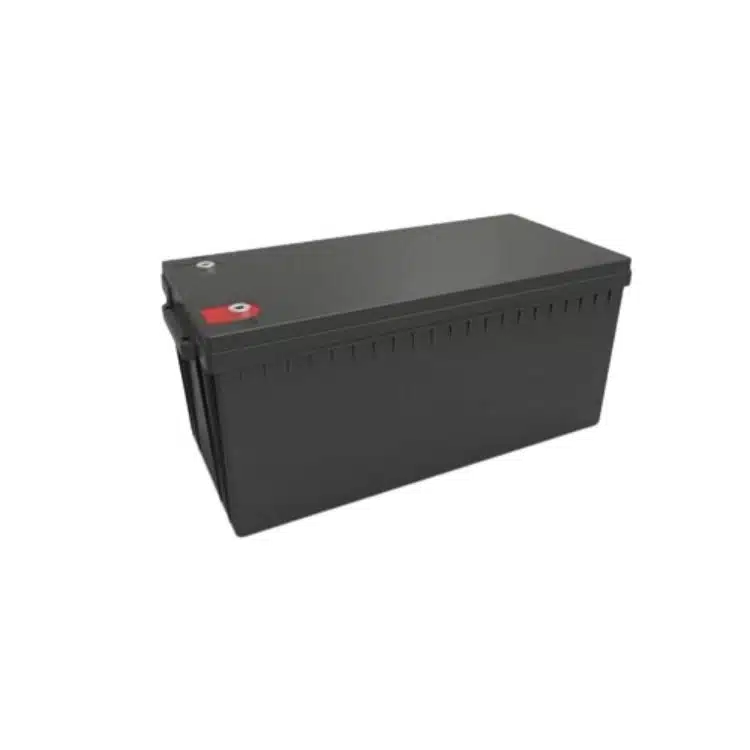
24V 150Ah LiFePo4 Battery
Nominal voltage: 25.6V
Nominal capacity: 150Ah
Rated energy: 3840Wh
Recommend charge current: ≤50A
Peak discharge current: 200A
Internal resistance: ≤15mΩ

24V 200Ah LiFePo4 Battery
Nominal voltage: 51.2V
Nominal capacity: 200Ah
Rated energy: 5120Wh
Recommend charge current: ≤80A
Peak discharge current: 200A
Internal resistance: ≤15mΩ
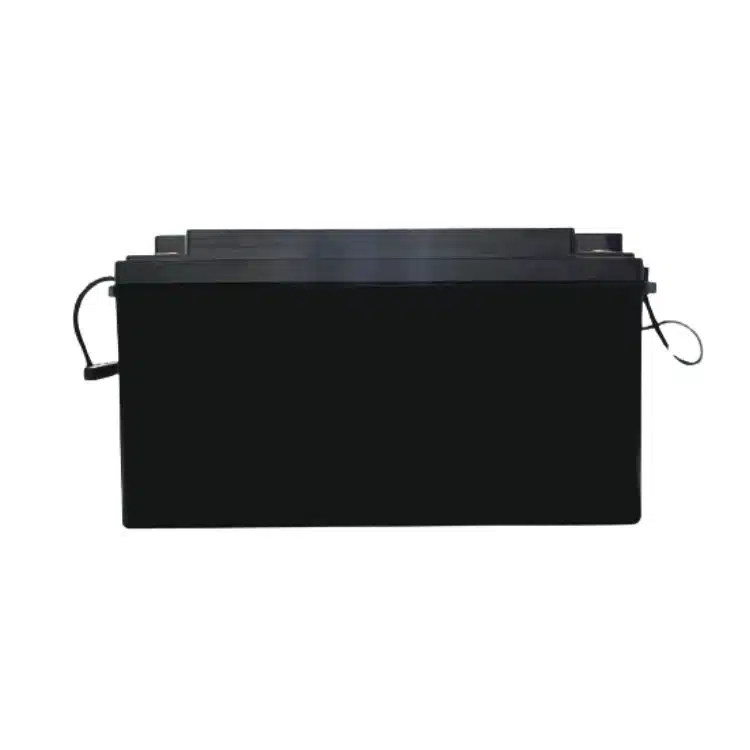
36V 50Ah LiFePo4 Battery
Nominal voltage: 38.4V
Nominal capacity: 50Ah
Rated energy: 1920Wh
Recommend charge current: ≤25A
Peak discharge current: 100A
Internal resistance: ≤30mΩ
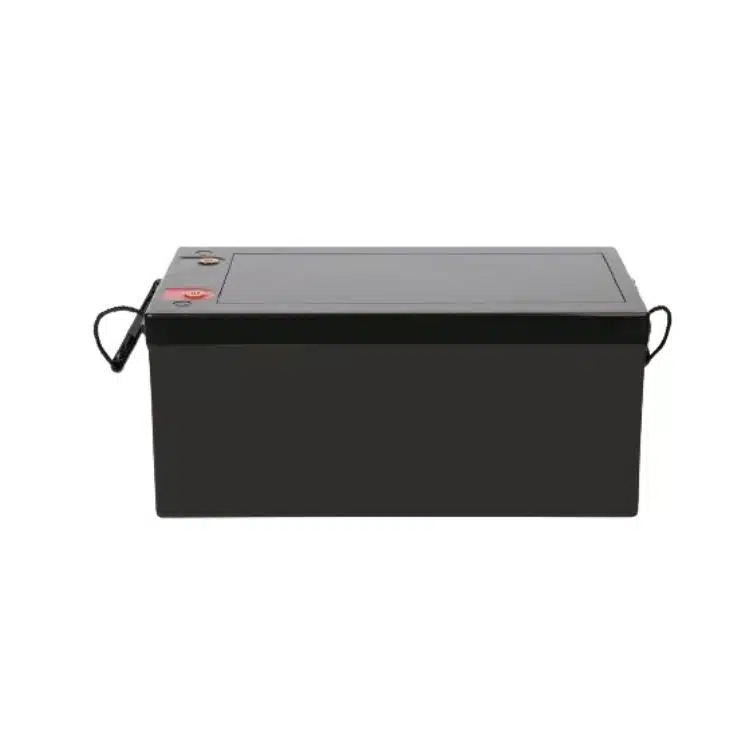
36V 100Ah LiFePo4 Battery
Nominal voltage: 38.4V
Nominal capacity: 100Ah
Rated energy: 3840Wh
Recommend charge current: ≤50A
Peak discharge current: 200A
Internal resistance: ≤25mΩ
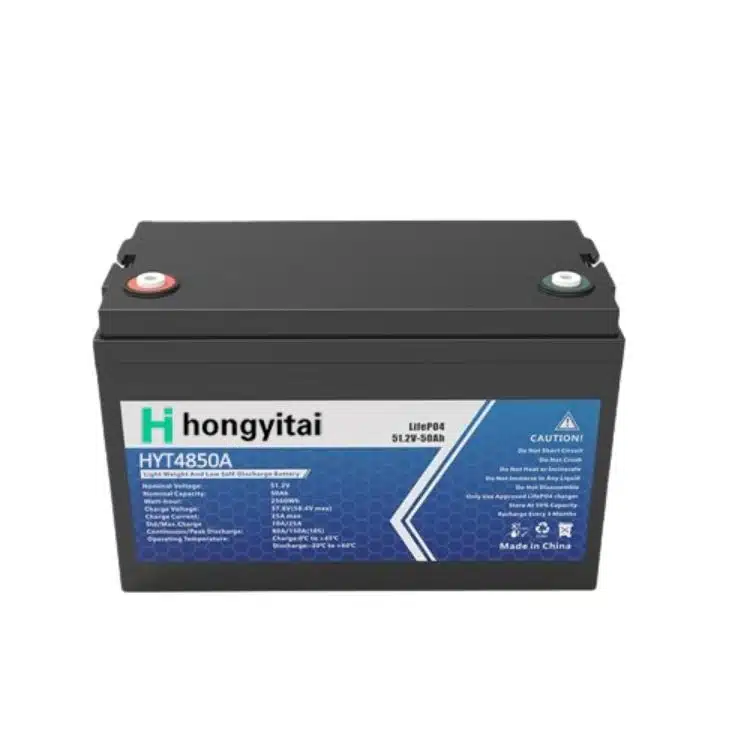
48V 50Ah LiFePo4 Battery
Nominal voltage: 51.2V
Nominal capacity: 50Ah
Rated energy: 2560Wh
Recommend charge current: ≤25A
Peak discharge current: 100A
Internal resistance: ≤30mΩ
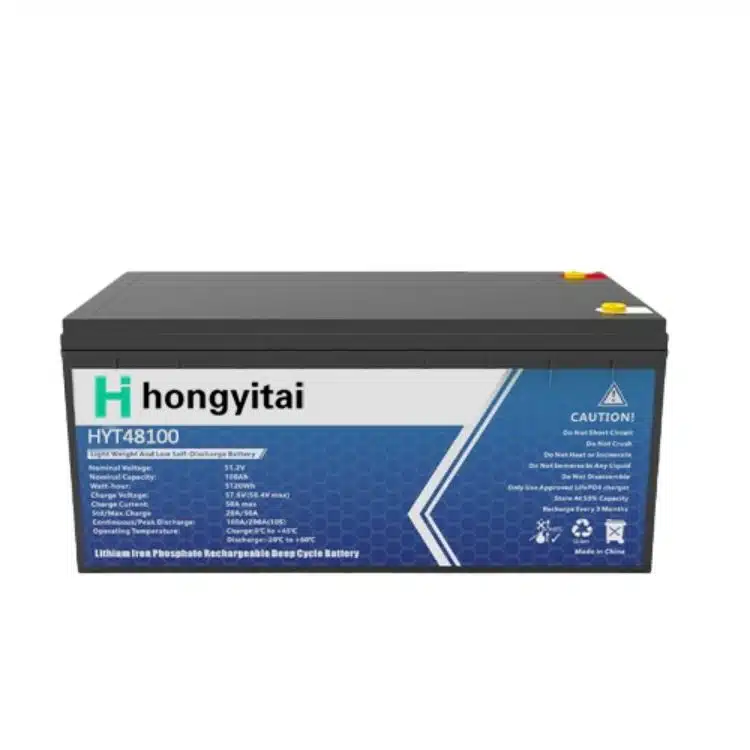
48V 100Ah LiFePo4 Battery
Nominal voltage: 51.2V
Nominal capacity: 100Ah
Rated energy: 5120Wh
Recommend charge current: ≤50A
Peak discharge current: 200A
Internal resistance: ≤20mΩ

Advantages of lithium marine batteries
Long Lifespan: Due to the harsh marine environment, we use sheet metal casings with IP65 waterproofing. The cells are made of A-grade LiFePO4 cells, which have excellent high-temperature resistance.
Stable and Consistent Output: LiFePO4 provides stable voltage output, making it the preferred choice for energy storage and automotive batteries.
Deep Cycle: Our lithium batteries offer 6000+ cycle life and 8-10 years of service life.
Customization Support: Due to the diversity of marine batteries, we can customize different voltages, capacities, sizes, and output performances.
The differences between 12V, 24V, 36V, and 48V deep cycle marine batteries mainly lie in the following aspects:
Voltage and Application:
- 12V Deep Cycle Battery: Typically used for small boats and electrical devices such as lighting, audio systems, and small electric motors. They are the most common type of marine battery, suitable for single power systems.
- 24V Deep Cycle Battery: Suitable for applications requiring higher power, such as larger electric motors or multiple electrical devices. Often used in medium-sized boats, providing longer running times and higher power output.
- 36V Deep Cycle Battery: Used in systems with higher power demands, usually found in larger boats or specific electric propulsion systems. Provides stronger power and efficiency.
- 48V Deep Cycle Battery: Suitable for high-power applications such as electric propulsion systems and large electrical devices, supporting longer run times and higher power output.
- 12V Deep Cycle Battery: Typically used for small boats and electrical devices such as lighting, audio systems, and small electric motors. They are the most common type of marine battery, suitable for single power systems.
Capacity and Endurance:
Higher voltage batteries typically have greater capacity (Ah) and endurance. High voltage systems can deliver more energy in a shorter time, suitable for prolonged use, with main capacities being 50Ah, 100Ah, and 200Ah.
Connection Method:
12V Battery: Usually used independently, with simple connections.
24V, 36V, and 48V Batteries: Typically require multiple 12V batteries connected in series to achieve the desired voltage. This connection method requires batteries with the same capacity and type to ensure uniform discharge and charging. Many also choose single 24V, 36V, or 48V battery packs for easier and quicker operation.
Weight and Size:
As voltage increases, the size and weight of the battery also increase. This may affect the design and layout of the boat, so it is important to consider the space and weight capacity of the boat when choosing.
In summary, choosing the right deep cycle marine battery depends on specific power needs, equipment types, and boat design.
Differences between 12V, 36V, and 48V lithium marine battery
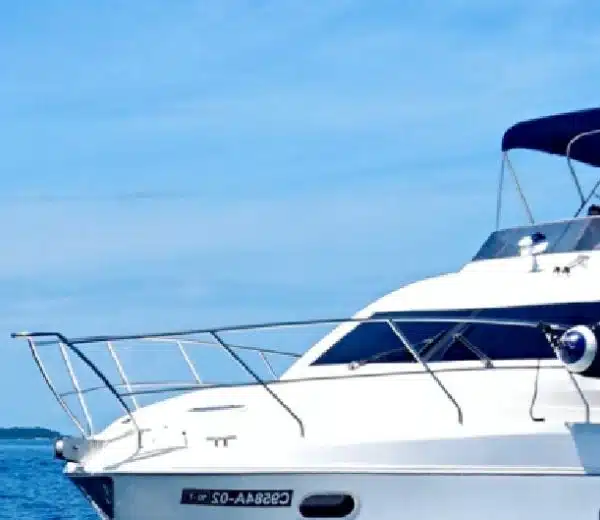
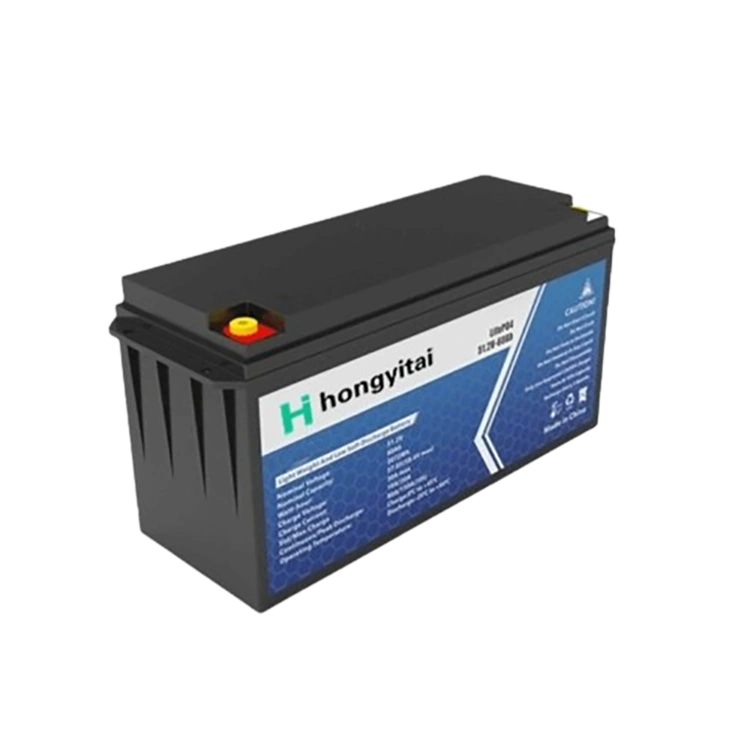
Everything you should know about marine battery terminals
Marine battery terminals are crucial components that connect the battery to the boat’s electrical system. They act as bridges, transmitting the power generated by the battery to various parts of the boat, providing energy for starting the engine, lighting, navigation, and other onboard electronic devices.
Choosing the right marine battery terminals is essential because it directly affects the stability and safety of the boat’s electrical system. Here are some key factors to consider when selecting marine battery terminals:
Corrosion Resistance: The saltwater and humid air in the marine environment accelerate the corrosion of metal components. Therefore, marine battery terminals should be made of corrosion-resistant materials, such as tin-plated copper or brass. These materials can resist saltwater corrosion, extend the terminals’ lifespan, and ensure good electrical connections.
Design and Compatibility: Marine battery terminals need to be compatible with different types of batteries and cables. Many products use color coding to distinguish positive and negative terminals for easy identification. Additionally, some terminals can convert automotive-style post terminals to marine-style wing nut terminals to ensure compatibility with most standard marine batteries.
Safety: High-quality marine battery terminals should have reliable locking mechanisms that prevent loosening due to boat vibrations or movements, reducing the risk of electrical failures. This is crucial for maintaining a stable power supply while the boat is in motion.
Ease of Installation: Boat owners may need to regularly inspect, clean, or replace battery terminals. Choosing terminals that are easy to install and remove can improve maintenance efficiency. Some terminals use quick connect/disconnect designs, allowing them to be tightened or loosened by hand without additional tools.
Consideration to slecte marine battery
In addition to the above factors, consider the following points when selecting marine battery terminals:
- Rated Current: Ensure that the terminals’ rated current can meet the electrical demands of the boat’s system.
- Wiring Method: Choose the appropriate wiring method, such as ring terminals, fork terminals, or bolt terminals, to match your cable type.
- Brand Reputation: Selecting marine battery terminals from reputable brands usually means higher quality and reliability. This is a common accessory we use, stable and reliable. Don’t worry.

Marine battery vs car starting battery
| Characters | Marine Battery | Car Starting Battery |
|---|---|---|
| Purposes | Starting engines, supplying power to various electrical devices | Starting engines |
| Housing Material | Thicker sheet metal | Thinner aluminum housings or sheet metal |
| Durability | High | Normal |
| Performance | Stable, long-time discharge | Fast startup, short discharge time |
| Application | Marine, Boat | Car |

Lithium-ion battery production process
#1 Cell Selection
Select the quantities of LiFePO4 battery cells we need. Ensure they works fine.
#2 Battery Sorting
Make sure that the capacity, voltage, and internal resistance of the selected cells are consistent.
#3 Arrangement & Assembly
Combine the required battery modules in a series-parallel manner.
#4 Spot Welding
The positive and negative terminals of the battery are connected via nickel tabs to form the desired capacity or voltage.
#5 Mounting Protection Board
Connect the protection board on the battery pack to ensure that its overcharge, overdischarge and short circuit protection functions properly.
#6 Packaging & Aging
Wrap the battery pack in a PVC or metal casing while charging and discharging to activate the battery pack performance.
FAQs for batteries for golf cart
Charging marine deep cycle batteries is simple but requires some basic safety and operational guidelines. Here are the detailed steps:
Prepare the Battery
- Turn off the boat’s main power switch to avoid electrical accidents.
- Clean the battery terminals with a cloth to remove any corrosion or dirt.
- Apply some terminal grease to improve the connection.
Connect the Charger
- Identify the positive (+) and negative (-) terminals on the battery.
- Connect the charger’s positive clamp to the positive terminal and the negative clamp to the negative terminal.
- Ensure correct connection order to prevent battery damage.
Set the Charging Rate
- Most deep cycle marine battery chargers have multiple charging rates, usually multi-stage current charging.
- Refer to the battery manual to determine the appropriate charging rate for your battery.
Plug In and Start Charging
- After connecting, plug in the charger.
- Some models may have a “start” button or switch.
- Monitor the battery’s status during charging until it is fully charged.
After Charging
- When the battery is fully charged, turn off the charger first.
- Remove the charging clamps in the reverse order of connection.
Additional Tips
- Charging Frequency: Regular charging can extend battery life. Try to keep the battery at around 50% charge.
- Use a Smart Charger: Smart chargers automatically adjust charging parameters, ensuring safe and efficient charging.
By following these steps, you can effectively charge your marine battery, ensuring its reliability and performance during navigation.
Yes, you can use marine batteries in cars, but you need to consider a few key factors:
Battery Type:
- Only lithium iron phosphate (LiFePO4) marine batteries can be used as starter power in cars, and they usually have a 12V voltage. Lead-acid batteries are not suitable and are being phased out.
- Only lithium iron phosphate (LiFePO4) marine batteries can be used as starter power in cars, and they usually have a 12V voltage. Lead-acid batteries are not suitable and are being phased out.
Voltage and Compatibility:
- Ensure the marine battery voltage matches the car battery. Most cars use a 12V battery, so a 12V marine battery is compatible. However, 24V, 36V, or 48V marine batteries are not.
- Ensure the marine battery voltage matches the car battery. Most cars use a 12V battery, so a 12V marine battery is compatible. However, 24V, 36V, or 48V marine batteries are not.
Performance Differences:
- Marine batteries typically have better vibration resistance and corrosion resistance, making them suitable for harsh marine environments. These features are also beneficial in cars, but marine batteries are not specifically designed for quick engine starts.
- Marine batteries typically have better vibration resistance and corrosion resistance, making them suitable for harsh marine environments. These features are also beneficial in cars, but marine batteries are not specifically designed for quick engine starts.
Connection Method:
- The terminals on marine batteries may differ from car batteries. Ensure you pay attention to polarity and connection methods to prevent incompatibility issues.
- The terminals on marine batteries may differ from car batteries. Ensure you pay attention to polarity and connection methods to prevent incompatibility issues.
In summary, while marine batteries can be used in cars, it's best to choose the right battery type based on specific needs, or contact us for confirmation.
The lifespan of marine batteries varies depending on the type and maintenance. Here are the expected lifespans for different types of marine batteries:
Lead-Acid Batteries:
- These traditional deep cycle marine batteries typically last about 2 to 4 years with good maintenance. Due to their lifespan and the environmental impact of lead, they are slowly being replaced by lithium-ion batteries.
- These traditional deep cycle marine batteries typically last about 2 to 4 years with good maintenance. Due to their lifespan and the environmental impact of lead, they are slowly being replaced by lithium-ion batteries.
AGM (Absorbent Glass Mat) Batteries:
- AGM batteries have a longer lifespan compared to lead-acid batteries, usually reaching 4 to 7 years. Their low self-discharge rate is a significant advantage.
- AGM batteries have a longer lifespan compared to lead-acid batteries, usually reaching 4 to 7 years. Their low self-discharge rate is a significant advantage.
Lithium Batteries (LiFePO4):
- This newer type of battery has a significantly longer lifespan, typically lasting 8 to 10 years. Lithium batteries are lightweight, have higher energy density, and better discharge performance, making them suitable for marine applications that require frequent charging and discharging.
- This newer type of battery has a significantly longer lifespan, typically lasting 8 to 10 years. Lithium batteries are lightweight, have higher energy density, and better discharge performance, making them suitable for marine applications that require frequent charging and discharging.
In summary, the lifespan of marine batteries depends on their type, usage frequency, maintenance costs, and budget. Choosing the right battery type is a result of comprehensive evaluation.

